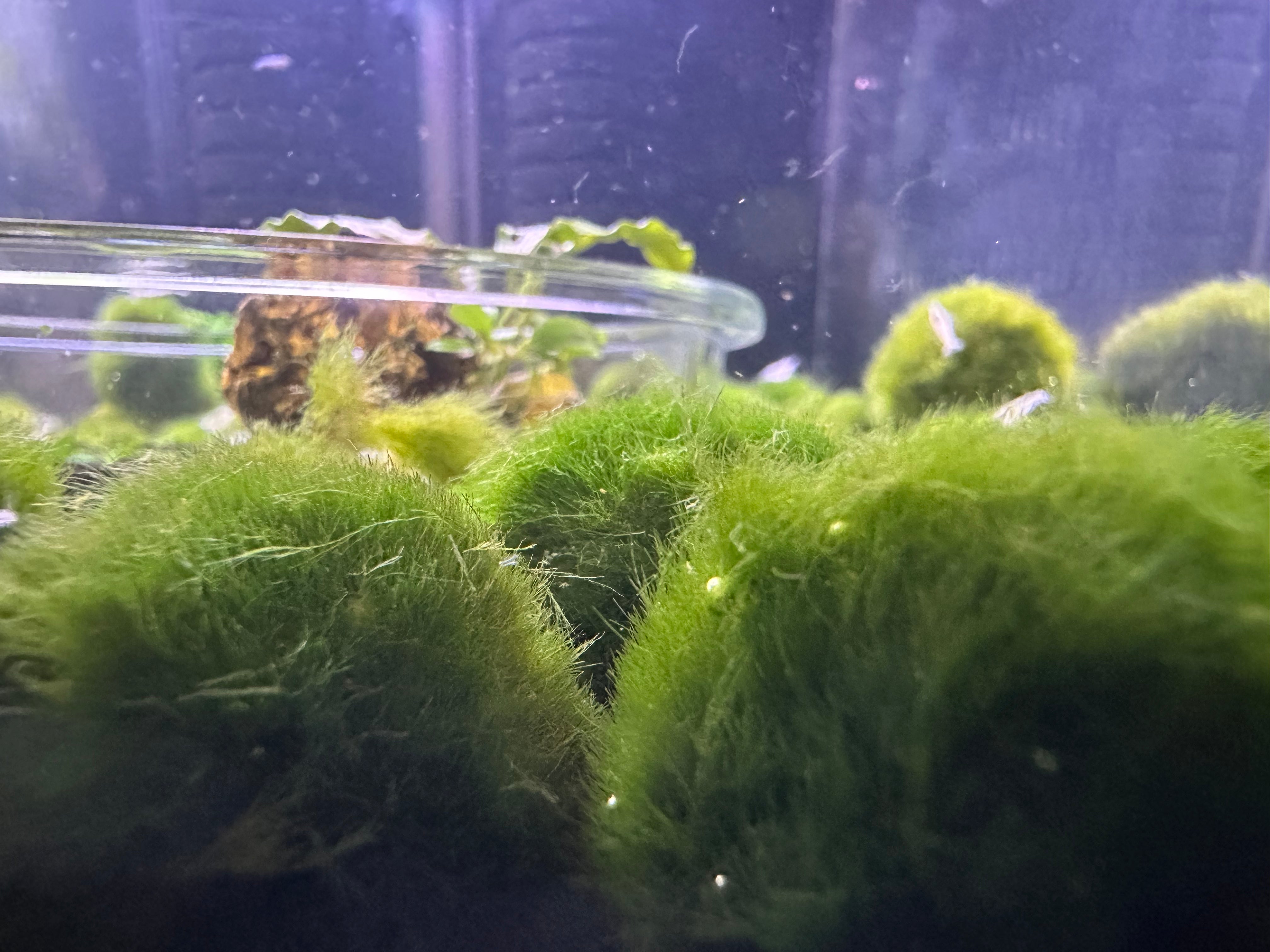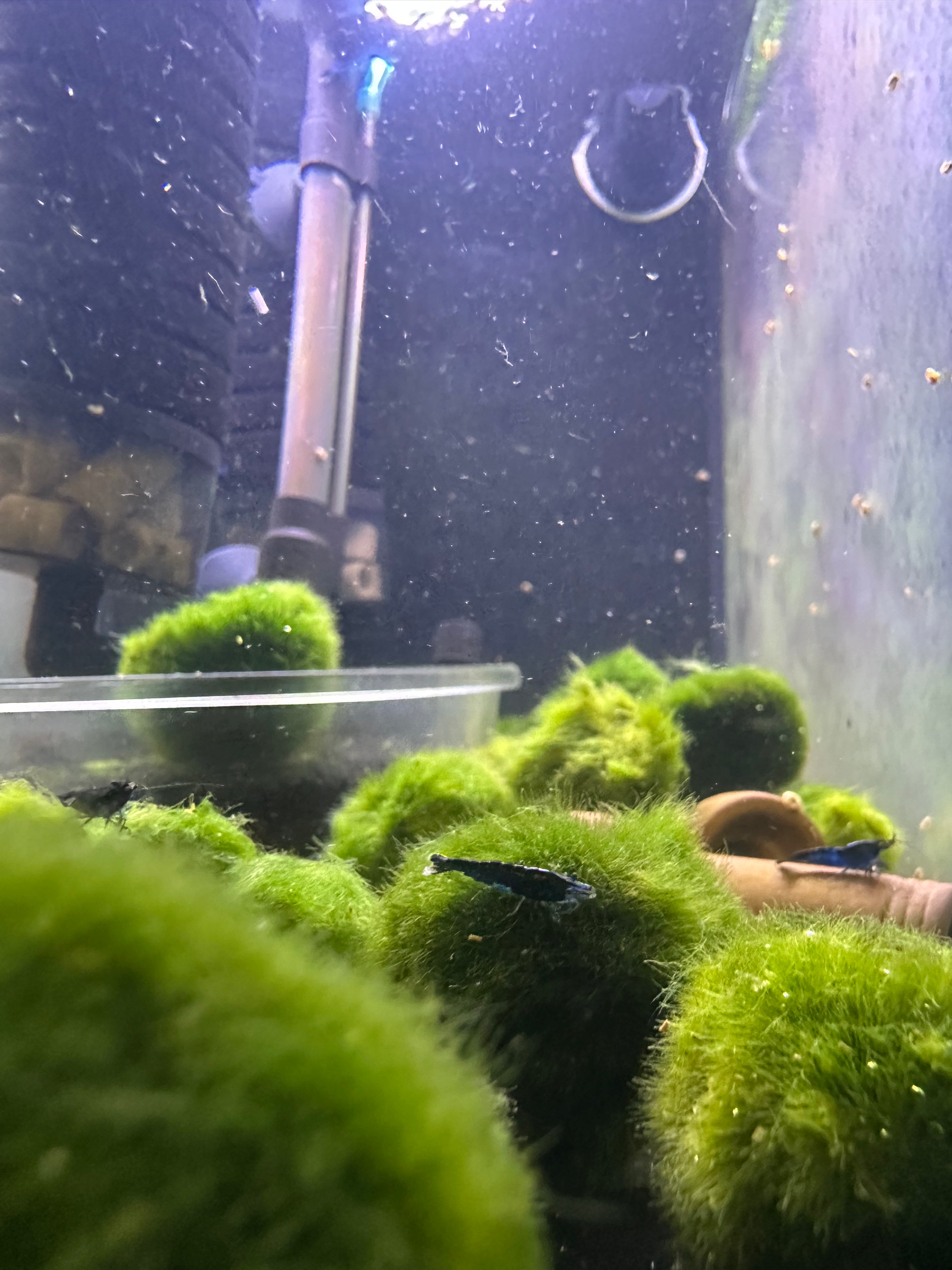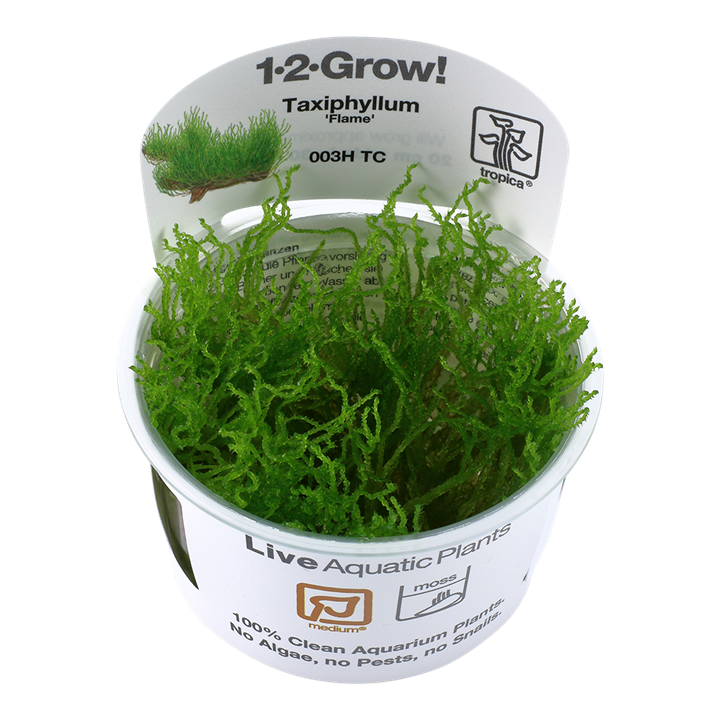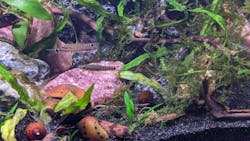
Moss Plants
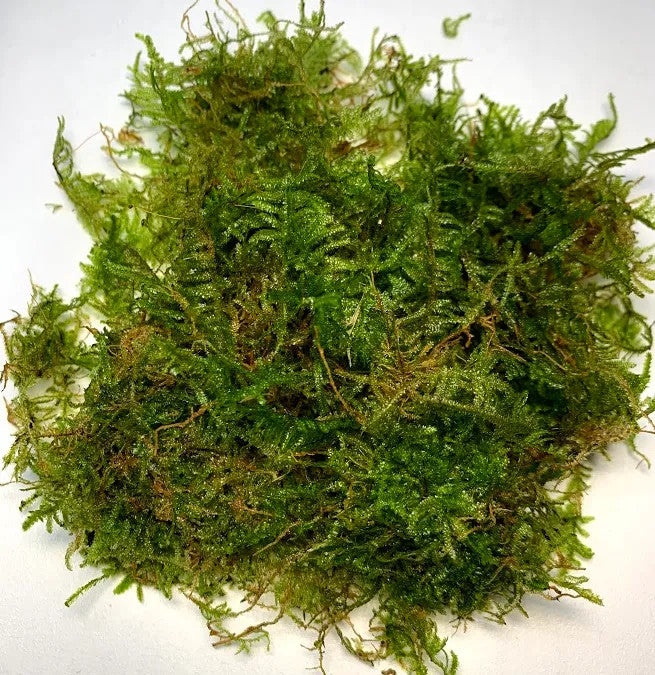
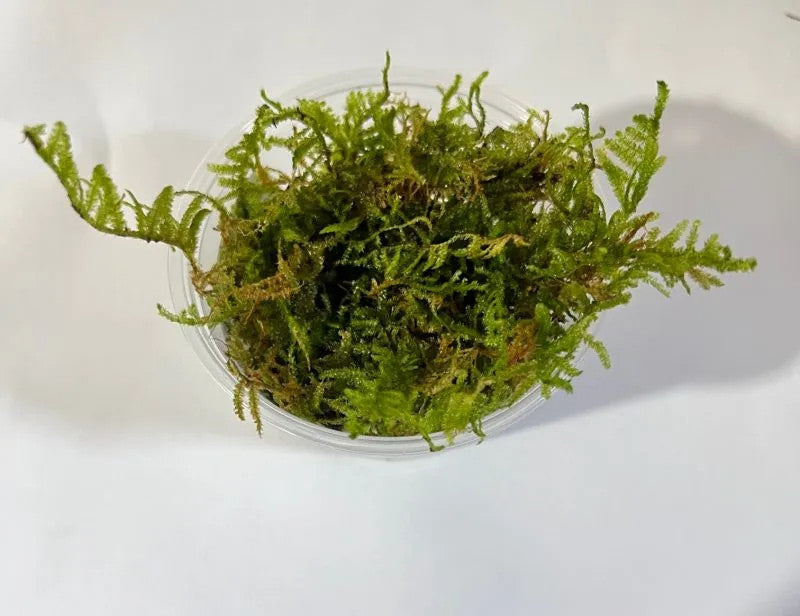
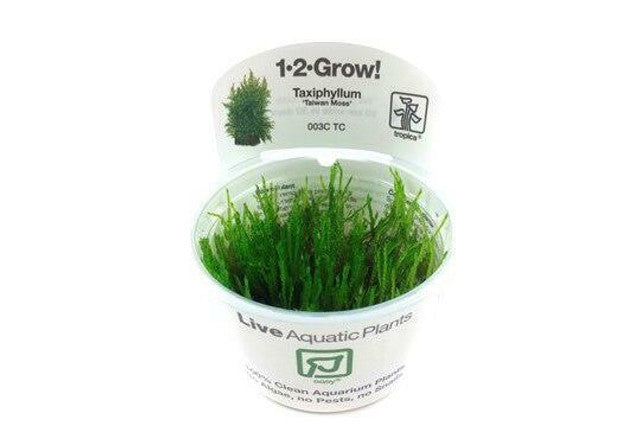
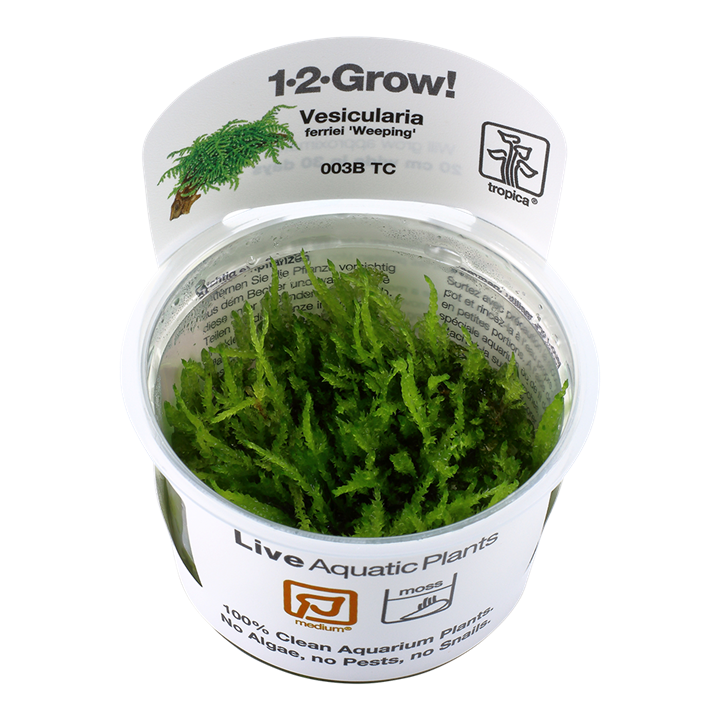
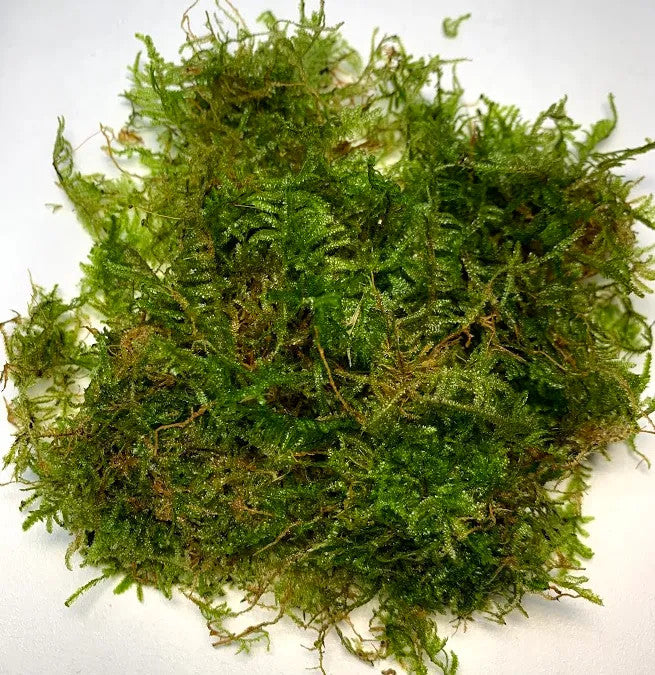
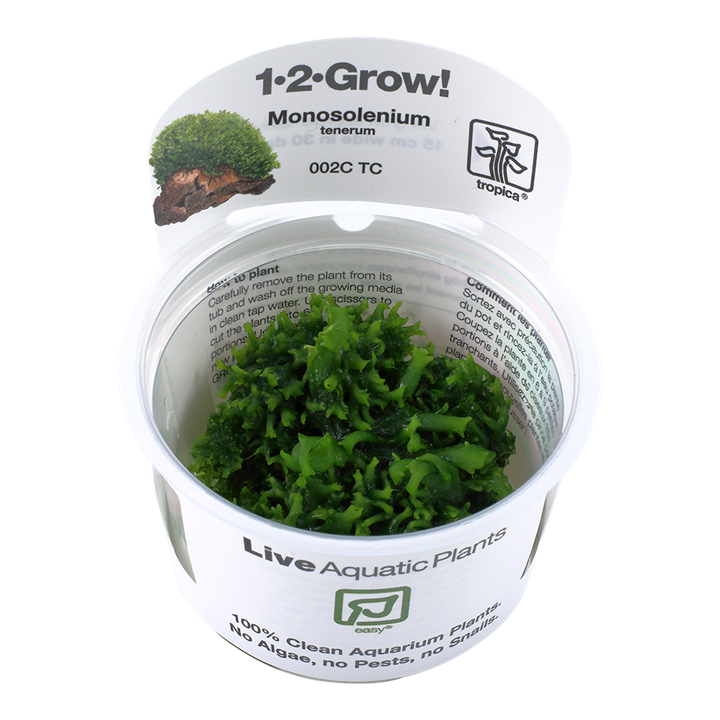
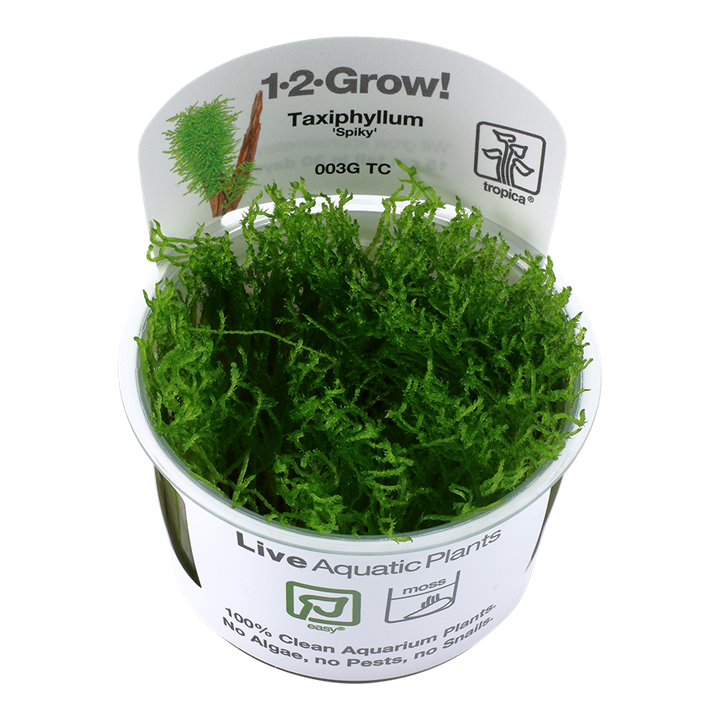
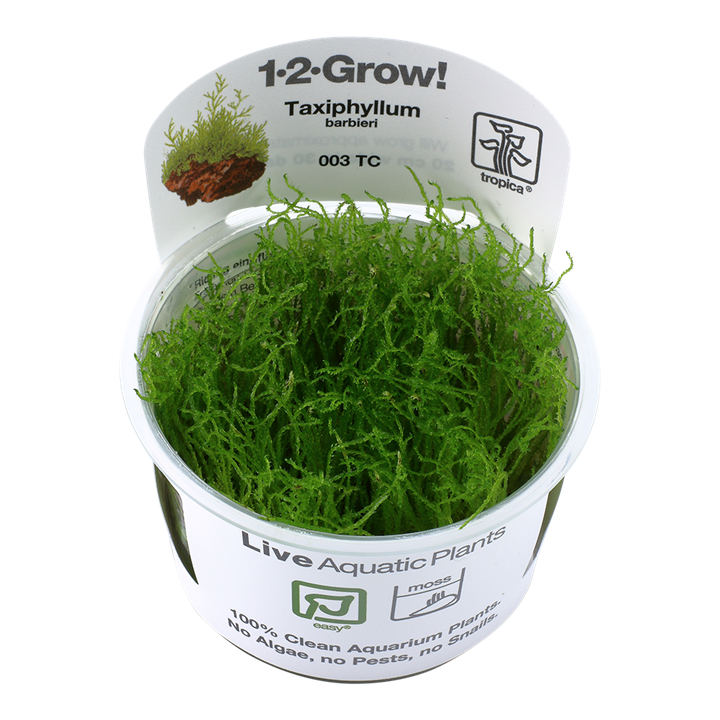
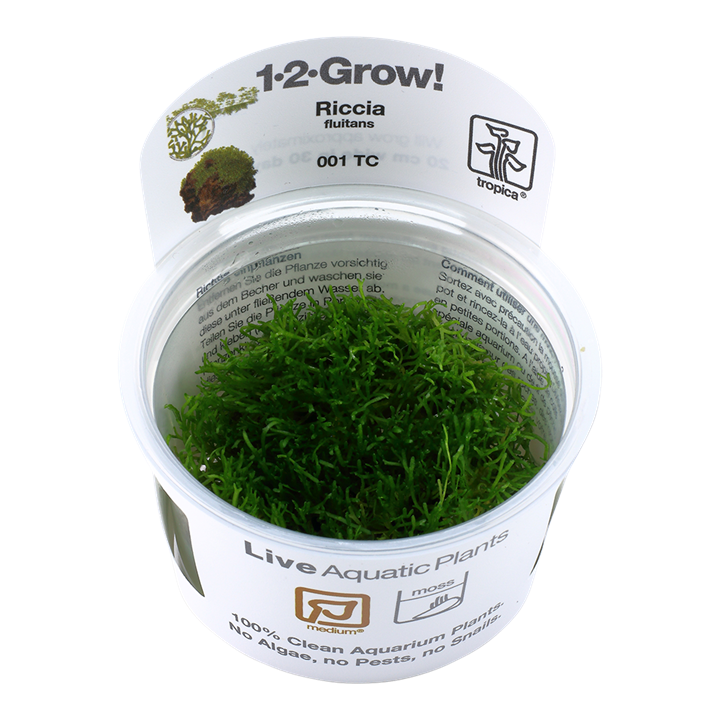
Aquarium moss plants are a popular choice for home aquarists due to their versatility, low maintenance, and ability to thrive in a variety of aquatic environments. These aquatic plants are known for their lush, green foliage and can add a natural, soothing aesthetic to any aquarium. Aquarium mosses are very versatile and can be used as a standalone plant or in combination with other plants to create a more diverse and natural-looking ecosystem. These plants are also great for providing shelter and security for fish and other aquatic life. Some popular types of aquarium moss include Java moss, Christmas moss, Marimo moss ball and Willow moss. These plants are easy to care for and require minimal maintenance. They can be attached to rocks, driftwood, or other aquarium decorations and will thrive in a range of lighting conditions. It provides a hiding spot for Baby Fish and Freshwater Shrimps.
Enhance your aquarium with our premium selection of moss plants, including Java Moss For Sale, Peat Moss, and more. Perfect for creating a lush, natural underwater environment, these moss plants for aquariums are ideal for beginners and experts alike. Whether you’re looking for moss plants for sale to decorate your tank or improve water quality, our collection offers a variety of options to suit your needs. Shop now at Splashy Fish and transform your tank with our high-quality moss plant selection! Visit us to buy them online or at our aquarium store in Virginia for more betta fish for sale, live fish for sale, aquarium plants for sale, and aquarium supplies.
Moss Plants Frequently Asked Questions (FAQs)
Is moss good for a fish tank?
Yes, moss is excellent for a fish tank as it offers multiple benefits. It adds oxygen to the water, enhances the tank’s ornamental value with its lush greenery, and provides shelter for fish and fry. Additionally, moss absorbs nitrites and other harmful compounds, helping to maintain a healthy and balanced aquatic environment.
Does moss remove nitrates?
Yes, aquarium moss is highly effective at removing nitrates from tank water. It naturally absorbs nitrates, nitrites, and even ammonia, acting as a biological filter that improves water quality. This nitrate-reducing ability makes moss a popular choice among aquarists and fish farmers for maintaining a clean, balanced environment.
Does aquarium moss need sunlight?
In general, aquarium moss does not need direct sunlight. It thrives in low to moderate artificial lighting, such as LED aquarium lights. Excessive sunlight can cause algae growth, so it’s best to use controlled light sources for healthy moss growth.
Transform Your Freshwater Aquarium with the Beauty and Benefits of Aquarium Moss
Are you looking to create a captivating plant paradise in your aquarium? Look no further than aquarium moss plants! With its lush green foliage and delicate texture, aquarium moss can transform your tank into a mesmerizing oasis. Beyond its aesthetic appeal, aquarium moss offers a range of ecological benefits that create a healthier and more natural environment for your pet fish. Not only does it help oxygenate the water, but it also provides shelter for live freshwater fish and supports a balanced aquarium ecosystem. Whether you’re a seasoned aquarist or a beginner eager to explore underwater gardening, aquarium moss is a versatile, low-maintenance addition to your aquarium tank that will leave both you and your fish in awe.
Why Aquarium Moss is Essential for Your Tank’s Ecosystem
Aquarium moss is more than just a beautiful addition to your tank - it plays a vital role in creating a healthy, balanced environment for your aquatic adventure. Here’s how aquarium moss benefits your aquarium ecosystem:
Improves Water Quality NaturallyAquarium moss plants act as a natural aquarium filter, absorbing excess nutrients such as nitrates and phosphates that can otherwise lead to poor water quality and algae overgrowth. By reducing these harmful compounds, moss helps maintain clear and healthy water, making it an essential component for creating a stable aquarium. Its ability to promote beneficial bacteria growth further supports the biological filtration process, ensuring waste and toxins are effectively broken down.
Creates a Safe Habitat for Freshwater Fish and ShrimpThe dense, fibrous structure of aquarium moss offers shelter and security for small fish, freshwater shrimp, and fry (baby fish). This is especially important in breeding tanks, where vulnerable young need protection from predators and strong water currents. Moss provides hiding places and a calm environment, reducing stress for fish species that thrive in low-stress habitats, such as bettas fish or tetras.
Enhances the Aesthetic Appeal of Freshwater AquascapingWith its vibrant green hues and soft, textured growth, aquarium moss adds a natural, serene beauty to any tank. Whether you’re designing a minimalist aquascape or creating a dense, jungle-like environment, moss enhances the visual depth and appeal of your aquarium. It can be used to create moss carpets, cover driftwood or aquarium rocks, or even form floating islands, making it a versatile tool for creative aquascaping.
Additional Benefits of Aquarium Moss:
- Provides a grazing surface for freshwater shrimp and algae-eating fish.
- Offers a home for beneficial bacteria, which helps maintain water quality and balance.
- Blends well with other aquatic plants like Java Fern, Anubias, and Cryptocoryne for a diverse and thriving planted tank.
Whether you’re an aquarium beginner or an experienced aquarist, aquarium moss is a valuable addition to your tank. Its ability to improve water quality, create a natural habitat, and enhance aesthetics makes it an essential plant for any freshwater setup.
Types of Aquarium Moss for Aquascaping
With a wide range of options, aquarium moss varieties bring unique aesthetics and functionality to any tank setup. Each type is suited to different aquascaping styles, allowing for creativity and customization. Here are some of the most popular types of aquarium moss:
Java Moss:Known for its resilience and adaptability, Java Moss is a favorite among beginners. It attaches easily to rocks, driftwood, or mesh to form a lush carpet or cover hardscape elements. This versatile moss thrives in a range of water conditions, making it an excellent choice for low-maintenance tanks or densely planted aquascapes.
Asian Flame Moss:This moss gets its name from its flame-like growth pattern, with vertical shoots resembling dancing flames. Flame Moss creates a dramatic upward effect, making it ideal for aquascapes that require a focal point or striking centerpiece. Its compact growth works well when anchored to aquarium stones, rocks or driftwood.
Christmas Moss:With its dense, layered structure, Christmas Moss is perfect for creating a lush, forest-like backdrop in a freshwater aquarium. The triangular growth pattern resembles the branches of a Christmas tree, making it a popular choice for achieving a natural decoration. It thrives in low to moderate light and provides excellent cover for freshwater fish and shrimp.
Peacock Moss:Peacock Moss is known for its feathery, intricate texture, which adds depth and complexity to aquascapes. It’s particularly effective when paired with natural rock formations or branches, creating a visually stunning display. Peacock Moss thrives in clean water and moderate light, making it ideal for aquascapers seeking a refined look.
Willow Moss:Thriving in cooler water temperatures, Willow Moss features a cascading, soft growth pattern that complements any hardscape or rock design. Its delicate leaves give tanks a serene, flowing aesthetic, making it a great choice for tanks with subtle, natural layouts. Willow Moss grows well in shaded areas, adding versatility to its placement in the tank.
Each variety of aquarium moss brings its own unique characteristics, allowing you to tailor your aquascape to your vision. Whether you’re aiming for a lush forest backdrop with Christmas Moss, a dramatic focal point with Flame Moss, or a beginner-friendly design with Java Moss, these live aquarium plants provide both beauty and ecological benefits. Add depth, texture, and functionality to your aquarium with these versatile moss options.
How to Care for Aquarium Moss
Aquarium moss is a versatile, low-maintenance plant that can enhance your tank’s aesthetic and ecological balance. Prepare care ensures it stays healthy, lush, and vibrant. Here’s a detailed guide to keeping your aquarium moss thriving:
Light Requirements:Most aquarium mosses, including popular types like Java Moss and Christmas Moss, prefer low to medium lighting. Too much light can lead to excessive algae growth, which can suffocate the moss and reduce water quality.
- Use adjustable LED aquarium lights to control the light intensity and duration.
- Maintain a light cycle of 6-8 hours per day to avoid algae buildup while providing enough light for healthy moss growth.
- If algae starts to form, reduce the aquarium lighting intensity or duration and ensure proper water circulation.
Stable water conditions are crucial for aquarium moss to thrive. Most varieties grow well in a wide range of water conditions, but optimal parameters include:
- Temperature: Maintain water temperatures between 68℉ to 82℉, suitable for both moss and most tropical fish.
- pH Levels: Keep the pH between 6.0 and 7.5, ensuring slightly acidic to neutral conditions.
- Water Hardness: Moss can tolerate soft to moderately hard water, but avoid extremes that could hinder growth.
- Perform regular water changes to maintain water quality and prevent nutrient imbalances that could lead to algae growth or poor moss health.
Regular maintenance is essential to keep aquarium moss looking its best and to prevent it from overtaking your planted tank.
- Trim Overgrowth: Use sharp, clean scissors to trim overgrown moss, especially in areas where it might block light or overwhelm other aquarium plants.
- Remove Debris: Clean off dead moss or organic debris that may settle on its surface, as this can encourage algae growth or rot.
- Promote Regrowth: Pruning encourages fresh, healthy growth by stimulating new shoots and preventing the moss from becoming too dense.
Aquarium moss thrives when properly anchored to surfaces like rocks, driftwood, or even mesh for creating carpets.
- Use aquarium-safe glue or nylon thread to secure moss to your desired location.
- Over time, moss will attach naturally, creating a seamless and natural look in your aquascape.
- Ensure proper anchoring to prevent moss from floating away and disrupting the tank design.
Although aquarium moss doesn’t demand much fertilization, occasional supplementation can boost its growth and appearance.
- Add liquid fertilisers containing iron and other trace elements to support vibrant green colorations.
- While not essential, aquarium CO2 injections can enhance moss growth, particularly in high-tech aquarium tanks with stronger lighting.
Algae can outcompete moss for nutrients and light, causing it to decline.
- Avoid overfeeding fish, as excess nutrients from waste can fuel algae growth.
- Introduce algae-eating species like Amano shrimp or nerite snails to help keep the moss clean.
- Ensure good water circulation and filtration to reduce stagnant areas where algae might develop.
By providing stable water parameters, proper lighting, and regular maintenance, aquarium moss can thrive and remain a stunning feature in your tank. Its versatility makes it an ideal addition for aquascaping, whether you’re creating a Java Moss carpet, adding texture to rocks with Peacock Moss, or using Christmas Moss to form lush backdrops. With the right care, aquarium moss will flourish, enhancing both the beauty and balance of your underwater ecosystem.
Creating a Stunning Aquarium Landscape with Moss Plants
Aquarium moss is highly versatile in aquascaping:
- Moss for Freshwater Aquarium Setup: You can anchor moss to types of aquarium rock, driftwood, or even create floating islands. Using moss strategically can create depth, softness, and contrast in your aquascape.
- Java Moss Carpet: For a lush, carpeted look on the aquarium substrate, spread Java moss over a layer of mesh or stones. It will eventually attach to the surface and create a green floor across the tank.
- Highlighting Aquatic Features: Place aquarium flame moss in prominent areas for a dramatic effect or use moss around rocks and plants to create a natural, balanced look.
Using Aquarium Moss as a Natural Filter in Your Tank
Aquarium moss can serve as an effective, natural filtration system for your tank. Here is how it works to maintain a clean and balanced environment:
- Absorbs Excess Nutrients: Moss naturally absorbs nitrates, phosphates, and other dissolved nutrients that accumulate in aquarium water. If left unchecked, these excess nutrients can negatively impact water quality, leading to algae growth and stress for aquatic life. By acting as a sponge for these nutrients, moss helps maintain a cleaner, more stable environment.
- Promotes Beneficial Bacteria Growth: The dense, fibrous structure of aquarium moss provides ample surface area for beneficial bacteria to grow. These bacteria are crucial to the biological filtration process, as they help break down waste products and toxins. By supporting a healthy bacteria population, moss improves the overall health of the tank and ensures a stable environment for your fish and other aquatic creatures.
Aquatic Life That Thrives in Aquarium Moss
Aquarium moss creates a comfortable, natural habitat that benefits a variety of species, offering both shelter and grazing opportunities:
- Freshwater Shrimp and Small Fish: Moss is particularly beneficial for shrimp, small fish, and fry (young fish), providing them with hiding spots and safe grazing areas. In breeding tanks, moss is especially valuable because it offers a protected space for eggs and newborns, shielding them from predators and strong water currents.
- Sensitive Species: Many fish species or freshwater invertebrates that are shy or prefer low-stress environments thrive in tanks with moss. The cover and security provided by moss help reduce stress for these species, allowing them to exhibit healthier behavior and live in a more comfortable setting.
Common Mistakes to Avoid When Using Aquarium Moss
While aquarium moss is generally low-maintenance, certain missteps can hinder its growth or lead to issues in your tank. Avoid these common pitfalls to help your moss flourish:
- Too Much Light: Moss typically requires low to moderate light to thrive. Overexposing moss to high light levels can lead to algae growth, which may suffocate the moss and affect water quality. To maintain a balanced environment, use low to moderate lighting and monitor your tank for signs of algae buildup.
- Improper Anchoring: One common mistake is failing to secure the moss properly. Without anchoring, moss can float away and disrupt the aquascaping design. Secure your moss to rocks, driftwood, or other décor with aquarium-soft glue or thread, ensuring it stays in place and contributes to your tank’s aesthetics.
- Neglecting Water Parameters: Although moss is quite hardy, extreme or inconsistent water conditions can hinder its growth. Maintain water parameters that support moss health: keep the temperature, pH, and water quality within stable ranges. Moss aquarium moss varieties do best in temperatures between 68 ℉ and 82 ℉ and a pH range of 6.0 to 7.5.
Where to Buy Aquarium Moss and How to Choose the Right One
When adding moss to your aquarium, it’s essential to start with a healthy sample. Here’s what to consider when buying aquarium moss:
- Where to Buy Java Moss and Other Varieties: Many reputable online aquarium stores and local pet shops offer various types of aquarium moss. Java moss is widely available and popular due to its resilience and versatility. Often, you can find moss pre-anchored to rocks or driftwood, making it easier to incorporate into your tank setup.
- Choose Health Moss: Look for moss that is bright green, vibrant, and free from visible algae or brown patches. Healthy moss should have a fresh, lively appearance, ensuring it will adapt well to your aquarium environment. Samples that are brown, limp, or algae-covered may not thrive, so be selective about what you purchase.
Conclusion: Why Aquarium Moss is a Game-Changer for Your Tank
Aquarium moss is a versatile, low-maintenance addition that offers both beauty and functionality, making it a must-have for any freshwater tank enthusiast. Whether you’re a beginner exploring a breathtaking freshwater aquarium landscape or a seasoned aquarist looking to elevate your tank’s design, moss provides endless possibilities to create a thriving underwater ecosystem.
One of the standout features of aquarium moss is its role in improving water quality. Acting as a natural filter, moss absorbs harmful nitrates, phosphates, and other dissolved nutrients that can disrupt your tank’s balance. This not only prevents algae overgrowth but also supports cleaner, healthier water for your aquatic landscape. Moreover, its fibrous structure serves as a breeding ground for beneficial, enhancing biological filtration and maintaining stable water conditions. By incorporating moss into your tank, you’re not just adding a plant - you’re investing in a self-sustaining ecosystem.
When it comes to aesthetics, moss adds a natural, serene beauty to any aquascape. Its vibrant green hues and soft textures blend seamlessly with rocks, bonsai driftwood, and other aquatic plants, creating depth and visual appeal. Whether you’re designing a minimalist layout or a lush, jungle-like environment, moss enhances the tank’s overall look. Popular varieties like Java Moss, Christmas Moss, and Peacock Moss offer unique textures and growth patterns, allowing you to customize your aquascape to your liking. From creating moss carpets to accentuating focal points with flame-like growths, the creative possibilities are endless.
Despite its impressive benefits, caring for aquarium moss is remarkably simple. It thrives in a wide range of water parameters, with optimal temperatures between 68℉ to 82℉ and a pH range of 6.0-7.5. Most moss varieties require low to moderate lighting, reducing the risk of algae overgrowth and making them ideal for low-tech setups. Regular trimming and occasional fertilization keep the moss healthy and encourage new growth, ensuring it remains a stunning feature in your tank.
For those looking to create a truly balanced and captivating aquarium, moss offers unparalleled versatility. It serves as a natural filter, habitat, and aesthetic enhancer, all while requiring minimal maintenance. By strategically placing moss in your tank - whether anchoring it to rocks, creating carpets, or accentuating driftwood - you can achieve a harmonious aquascape that supports both the health of your aquatic garden and the visual appeal of your tank.
Aquarium moss isn’t just a plant; it’s a powerful tool for creating a thriving, balanced underwater landscapes. Its ecological benefits, combined with its aesthetic flexibility, make it an essential addition to any freshwater tank. Whether you’re aiming to improve water quality, provide shelter for aquatic life, or simply add a touch of green elegance, moss delivers on all fronts. Take the step to include this versatile plant in your setup, and watch your aquarium flourish into a breathtaking underwater display.




















